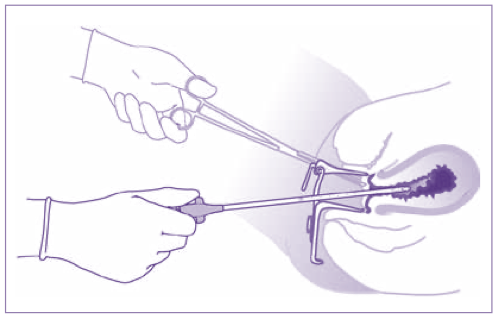
In the early 1990s I read about women who were using a medication to cause abortions without visiting a doctor. Brazilian women had found that misoprostol (CytotecÒ) was available without a prescription, and would cause strong uterine contractions that could expel an early pregnancy.
Since then, this knowledge has spread to all corners of the globe. Misoprostol is now approved by the US Food and Drug Administration for use in conjunction with mifepristone to be prescribed for legal abortions. This combination has been found to be both very effective and very safe. Recognizing the safety of this combination, the FDA has decreased restrictions on mifepristone. The combination can also now be prescribed by telemedicine. However, misoprostol is almost as effective when used alone.
The original indication for misoprostol had nothing to do with abortion. Instead, it was found to protect the stomach lining in people who had irritation from NSAIDs, such as ibuprofen. It has other uses, including induction of labor (in a teeny dose) and is a lifesaver for treating postpartum hemorrhage.
A Honduran friend sent me the transcript of a BBC News Program, “Inside Honduras’s abortion pill black market.” Abortion is illegal under all circumstances in this Central American country—the most restrictive law in the world. Having an abortion is punishable by 6 years in prison. Although “back ally” surgical abortions may still occur, this excellent piece of investigative journalism is about medication abortion. Only misoprostol is available in Honduras, not mifepristone. Unfortunately, this article doesn’t give any follow up on women who use the medicine. There are risks, and some women end up in the hospital.
One of the risks is that the pregnancy will continue; misoprostol alone is only about 90% effective. Follow up is needed to detect the one in 10 women who doesn’t abort. If the first dose doesn’t work, she should use a second dose or she may go to term. Sadly, a fetus exposed to miso early in pregnancy may be affected with serious congenital anomalies—one of the risks of unsafe abortion.
Back to Honduras. The reporter, Laura, first spoke with a young woman who didn’t use protection during a one-night-stand and was 2 months pregnant. She bought 4 tablets of misoprostol on the black market. José, the black-market supplier, charges on a sliding scale. He gets from $70 to $270—depending on what he thinks the woman can pay. In this country they might cost $10, with a prescription. José has to pay off his ex-girlfriend who works in a hospital and supplies the prescription. He may also keep the police happy with bribes.
Honduras’s largest public hospital is in the capital, Tegucigalpa. It treats around 60 women each week for bleeding during pregnancy, either from miscarriage or induced abortion. The UN estimates that there are about 70,000 unsafe abortions in Honduras each year. Making abortion illegal doesn’t prevent desperate women from having unsafe abortions. Without sexual education teens don’t know how to prevent pregnancies; Honduras has the highest rate of adolescent pregnancies in Central America. Could these facts reflect the unrealistic religious teachings in a country where 48% of people are evangelical Christian and 34% are Roman Catholic?
What lessons does Honduras have for the USA? Outlawing abortion doesn’t prevent women from obtaining abortions, but they may be unsafe, expensive and exploitive. Similarly, US states that have acted to restrict or outlaw abortion are among those with the highest teen pregnancy rates, the least sex ed and the poorest support for mothers and children. Many also have high maternal mortality rates, which will probably rise as desperate women take abortion into their own hands.
©Richard Grossman MD, 2023
